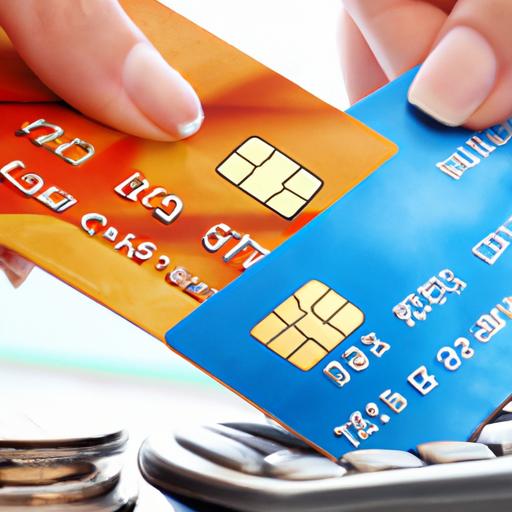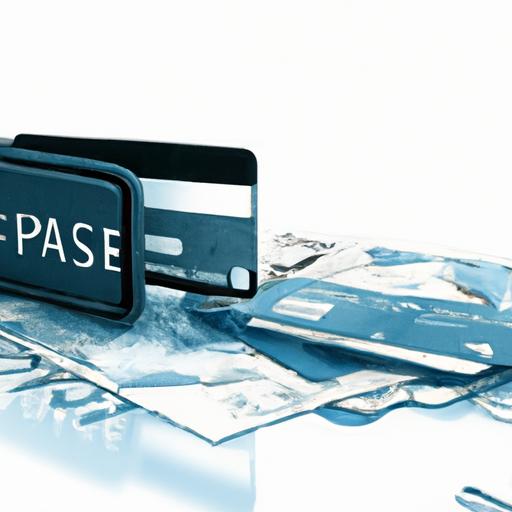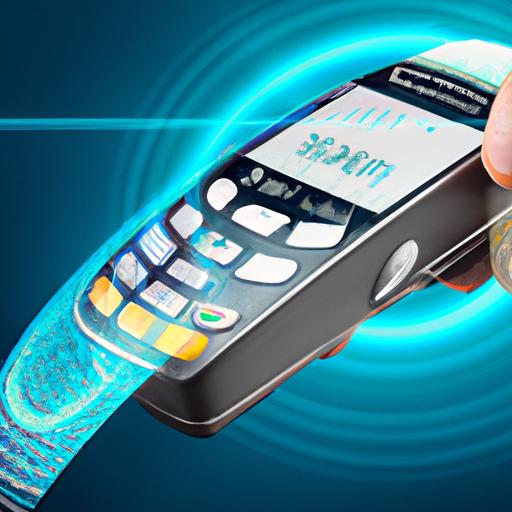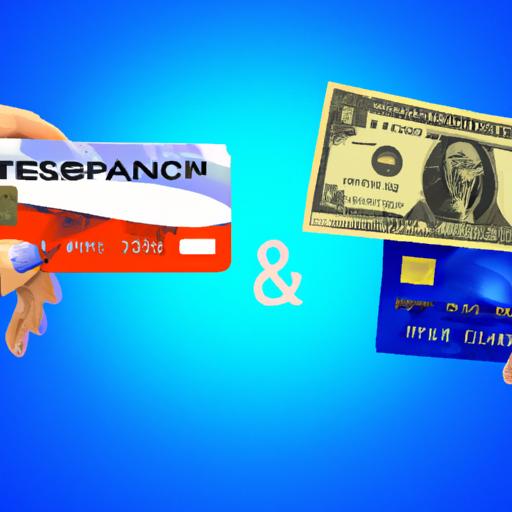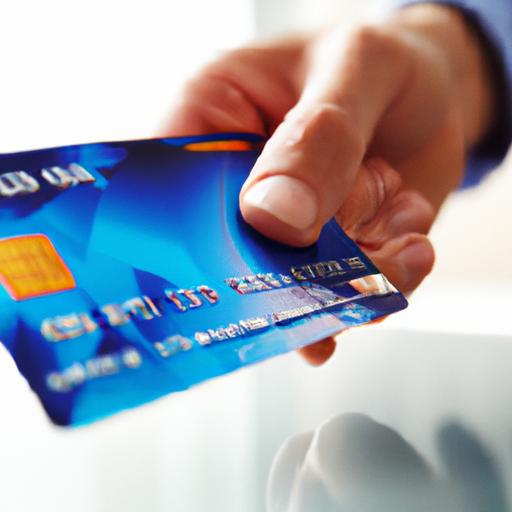So, you just checked your credit card statement and noticed a suspicious charge for that trendy hipster coffee shop you’ve never been to. Panic sets in as you envision someone sipping on a $10 pumpkin spice latte using your hard-earned money. Don’t fret, because disputing a credit card transaction is easier than you think! Here’s a step-by-step guide to help you reclaim your funds and get back to caffeinating on your own terms.
Step 1: Take a Deep Breath and Assess the Situation
First things first, take a moment to calm those racing thoughts and assess the situation. Is there a chance you might have made the charge without realizing it? Have you tried contacting the merchant directly to clarify the transaction? It’s essential to rule out any misunderstandings before entering the dispute process.
Step 2: Gather the Evidence
Once you’ve established that something fishy is indeed going on, it’s time to prepare your case. Arm yourself with evidence, as any good detective would! Collect all relevant documents, including your credit card statement, the transaction receipt (if you have one), and any correspondence you’ve had with the merchant.
Step 3: Pick Up the Phone
Now it’s time to give your credit card issuer a ring. Grab your phone and dial their customer service number, which can usually be found on the back of your card. Prepare for a few minutes of hold music and your impatient foot tapping rhythm. Once you’re on the line with a real human being, explain the wrongful charge as clearly and concisely as possible. The more information you provide, the better equipped they’ll be to assist you in the process.
Step 4: Fill Out the Dispute Form
After your enlightening phone call, buckle up for the next step. Your credit card issuer will most likely require you to fill out a dispute form. This is where you lay out the gory details and provide all the evidence you’ve gathered. Be as thorough as possible, reminiscent of a lawyer building an airtight case. Describe the questionable charge, state your reasons for disputing it, and include all relevant attachments. Remember – every little piece of evidence helps!
Step 5: Wait Patiently
Once you’ve submitted the dispute form, it’s time to play the waiting game. Take this opportunity to find your inner Zen, because the resolution isn’t going to happen in the blink of an eye. Keep an eye on your credit card statement during this period to see if the disputed charge is temporarily reversed, pending the investigation.
Step 6: Investigation Time
Now, imagine yourself as Sherlock Holmes (minus the British accent). Your credit card issuer will delve into the details of your case, gathering evidence and investigating the transaction. They will contact the merchant to verify the charge and evaluate your claims. This investigation period can take a couple of weeks, so make sure you’re stocked up on your favorite snacks to sustain yourself through any potential bouts of impatience.
Step 7: The Verdict
After what feels like an eternity, the moment of truth arrives. Your credit card issuer will reach a verdict and inform you of their decision, usually via mail or email. If they find in your favor, the disputed charge will be permanently removed from your statement, and a wave of elation will wash over you. However, if the verdict doesn’t go your way, don’t despair! You can always escalate your dispute by providing additional evidence or contacting consumer protection agencies, such as the Consumer Financial Protection Bureau.
Remember, disputing a credit card transaction may require persistence, a little detective work, and a pinch of patience. So, the next time you spot that unknown charge on your statement, you’ll be armed with the knowledge to tackle it head-on. Good luck and happy disputing!
In a world where technology has taken over almost every aspect of our lives, it’s no surprise that even the way we handle our money has undergone a dramatic transformation. Gone are the days of carrying around bulging wallets filled with cash—instead, we now have the convenience of e-wallets and traditional banking options to manage our finances. But which one is truly best for you?
Let’s imagine you’re strolling through a bustling city street, mesmerized by the bright lights and tempting storefronts. Suddenly, you spot a cozy café with an irresistible aroma wafting from its doors. Your taste buds tingle with anticipation, but there’s a problem: your wallet is empty, and it’s Monday—an eternal enemy of payday. Desperate to satisfy your caffeine cravings, you whip out your smartphone, open your e-wallet app, and voila! Your trusty e-wallet saves the day with a seamless transaction, eliminating the need to trudge to the nearest ATM.
No need to worry if you’re unfamiliar with e-wallets; they’re simply digital platforms that enable you to store money and make electronic transactions securely. Think of it as having a virtual wallet stocked with your hard-earned funds—a financial Swiss army knife that allows you to pay bills, transfer money, and make purchases with a simple tap of your finger.
Convenience is undoubtedly the crown jewel of e-wallets. With just a few swipes, you can complete transactions anytime, anywhere, without having to deal with long queues or carrying stacks of cash. Whether you’re buying groceries, hailing a taxi, or purchasing concert tickets, your e-wallet has got you covered. Plus, it’s not just for the trendy young folk! E-wallets are gaining popularity across generations—quite literally, money at your fingertips.
But what about traditional banking, you may ask—a tried-and-true system that has been around for centuries? Well, amidst the rise of e-wallets, traditional banking certainly hasn’t lost its charm. Picture yourself strolling into a grand, marble-clad bank. The cool air brushes your skin as you make your way to the teller, a friendly face awaiting your arrival. This face-to-face interaction, along with the reassurance of physically handling your money, creates a sense of security that some find invaluable.
While e-wallets offer instant gratification, traditional banking institutions provide a wide array of services that cater to different financial needs. From mortgages to investments, car loans to fixed deposits, the seemingly endless possibilities can make your head spin, but in a good way! Bank experts are just a phone call or visit away, guiding you through the complex world of finance. They possess a wealth of knowledge and expertise, offering insights and advice to help you make informed decisions.
However, traditional banking isn’t without its drawbacks. One of the major pitfalls is the limited operating hours. Need to transfer funds urgently on a Sunday? Sorry, you’ll have to wait until Monday morning. E-wallets, on the other hand, never sleep. They’re available 24/7, making your financial life a breeze.
So, what’s the best option for you? Well, it depends on your lifestyle, preferences, and financial goals. E-wallets offer unparalleled convenience and speed, making them ideal for those seeking instant gratification. On the flip side, traditional banking shines with its personal touch, comprehensive services, and a sense of security that’s hard to replicate.
In the end, the choice boils down to a matter of personal preference. Do you embrace the tech-filled future by diving headfirst into the world of e-wallets? Or do you seek comfort in the familiarity of traditional banking? No matter the path you choose, the financial world is at your fingertips—a wealth of opportunities and convenience awaits. The power is in your hands, quite literally.
Mobile Point of Sale (mPOS) Systems: Revolutionizing In-Person Transactions
Picture this: you’re standing in a crowded bazaar, surrounded by a symphony of scents and sounds, but what catches your eye isn’t the vibrant wares or the hustle and bustle of the market. It’s the hip vendor with a sleek mobile device in their hand, ready to complete your purchase with a simple tap. Welcome to the era of Mobile Point of Sale (mPOS) systems – a revolution in in-person transactions that’s turning traditional payment methods upside down.
Gone are the days of fumbling for cash or worrying about having enough change. With mPOS systems, merchants have the power of a full-fledged cash register right at their fingertips. These compact, handheld devices are equipped with everything sellers need to process payments seamlessly, hassle-free. Whether you’re at a local farmer’s market or a swanky boutique, these devices are redefining the way we shop.
Imagine strolling through a department store, laden with shopping bags, only to find the perfect pair of shoes. But, oh no! Your wallet is nowhere to be found, and the temptation to leave your fashion find behind is crushing. Fear not, because with mPOS systems, even the most forgetful shopper can complete a transaction with ease. No longer are we slaves to our wallets; a simple tap of a card or a swift flick over a smartphone is all it takes to complete your purchase, saving time and maintaining your style status.
But mPOS systems are about more than just convenience. They are leveling the playing field for small businesses, empowering them to compete with industry giants. In the past, only established brick-and-mortar stores had the luxury of fancy checkout terminals. However, with mPOS systems, any enterprising individual with a smartphone or tablet can become a merchant, making it easier than ever to turn dreams into reality.
Customer experience is the beating heart of any business, and that holds true for mPOS systems as well. With this groundbreaking technology, transactions become personalized experiences, seamlessly blending the physical and digital worlds. The days of painfully slow cashiers are over; instead, transactions are streamlined, providing customers with a sense of efficiency and leaving them with a smile on their face.
Security concerns often loom large when it comes to new payment methods, but mPOS systems have that covered too. With stringent encryption protocols and built-in safeguards, your personal and financial information is locked up tighter than Fort Knox. Say goodbye to anxiety-inducing moments of handing over your credit card, because mPOS systems have your back when it comes to protecting your most valuable assets.
The world is moving at an unprecedented pace, and embracing technological advancements is the key to survival. As mPOS systems continue to infiltrate the transaction landscape, traditional payment methods are being forced to bow out gracefully. Say hello to the future, where your trusty mobile device is your wallet, and every shopping experience is transformed into a magical journey of possibilities.
So, next time you find yourself in that vibrant bazaar or swanky boutique, relish the ease and simplicity of completing your transaction with a single tap. The world is your digital oyster, and with mPOS systems, every purchase becomes a step towards a future where innovation knows no bounds.
Imagine this scenario: you’re strolling down the bustling streets of a busy city, trying to navigate through the labyrinth of stores. You spot a cozy cafe that catches your eye, so you decide to treat yourself to a cup of coffee and a delectable pastry. Feeling like a true connoisseur of life’s simple pleasures, you reach for your trusty plastic card, ready to make a purchase. But have you ever wondered how your sensitive cardholder data is safeguarded during this seemingly effortless transaction?
Enter the unsung hero of cybersecurity: encryption. It’s like a secret code that transforms your sensitive information into an indecipherable jumble of characters, shielding it from the prying eyes of would-be hackers. Let’s explore the paramount role of encryption in protecting our cherished cardholder data.
First things first, what is encryption? In simple terms, it’s a digital fort knox that locks away your precious cardholder data. It converts your personal information, such as your credit card number and expiration date, into an encrypted form that is of no use to malicious actors. Without the decryption key, it’s like trying to read hieroglyphics without a Rosetta Stone – practically impossible.
So, how does encryption work its magic? Imagine you’re writing a love letter, and you want to ensure that only your sweetheart can read it. You employ a secret language only the two of you understand. Each letter is swapped for a different one according to a carefully crafted code. “L” becomes “P,” “O” becomes “E,” and so on. To anyone else, your letter is just a nonsensical jumble of letters, leaving your declare of love safe and sound.
In the world of cardholder data protection, the process is similar but far more complex. When you enter your card information at a payment terminal or an online checkout, it’s encrypted on the spot before it embarks on its digital journey. It’s like putting your love letter into a high-tech envelope that scrambles every word into an indecipherable mess.
This fortified envelope is then sent through a virtual tunnel, traveling securely across the internet to its destination. It’s crucial to remember that encryption doesn’t just protect your data while it’s in transit. As it reaches its intended receiving end, the recipient’s system holds the golden key needed to unlock your encrypted data. Their system alone can unscramble the jumbled mess back into its original form.
But here’s the catch: encryption isn’t a one-size-fits-all solution. Just like every superhero has its kryptonite, encryption relies heavily on the strength of its algorithm. Algorithms, in this case, are like secret recipes that determine how strong the encryption will be. Think of it as an encryption superhero designer, carefully crafting a costume with impenetrable armor.
In the ever-evolving realm of cybersecurity, encryption algorithms must keep up with the advancements hackers make in their dastardly pursuit. Today’s state-of-the-art algorithm could be tomorrow’s relic in the face of a relentless hacker’s prowess. So, we must ensure that encryption algorithms evolve, adapting to new threats and challenges at lightning speed.
Encryption is the unsung hero that stands as the bulwark against malicious actors seeking to exploit your cardholder data. Just as a knight in shining armor safeguards a kingdom, encryption shields our cardholder data, letting us enjoy our favorite cup of coffee and delectable pastries without a worry in the world. So, next time you indulge in a purchase, rest assured that encryption’s got your back, ensuring that your cardholder data remains safe and sound in this digital age.
Are you tired of reaching into your pockets, scavenging for spare change to complete your purchases? Well, fear not my fellow consumers, for the era of contactless payments has arrived! In this digital age, where everything seems to be just the touch of a button away, it’s no surprise that even our wallets have become virtual. Say hello to NFC technology—your gateway to a simpler, more convenient way of paying.
NFC, short for Near Field Communication, may sound like something out of a sci-fi movie, but it’s actually quite simple. It enables two electronic devices, such as a smartphone and a payment terminal, to communicate with each other wirelessly when placed close together. It’s like a virtual handshake, allowing the transfer of data between the two devices in an instant. Think of it as an invisible thread that connects your phone to the payment system, making transactions smoother than ever.
But how does this cutting-edge technology actually work, you ask? Well, when you make a contactless payment, your smartphone sends a signal to the payment terminal using NFC. This signal contains all the necessary information, such as your card details and the payment amount. The payment terminal then receives this data and processes it securely, deducting the amount from your account. All this happens in a blink of an eye. It’s like magic, only better!
One of the greatest advantages of NFC technology is its ease of use. Gone are the days of fumbling around with pin numbers, signatures, or even physical cards. With a simple tap, your payment is complete. It’s so convenient that you’ll wonder how you ever managed without it. Plus, contactless payments are not just limited to your smartphone; you can also use smartwatches, key fobs, or even a speck of jewelry with built-in NFC. The possibilities are endless!
But is it safe, I hear you ask? Absolutely! NFC technology combines convenience with rigorous security measures to ensure your transactions are protected. First, it limits the communication range to a few centimeters, making it virtually impossible for anyone to intercept your data without physically touching your phone. Second, all the information exchanged between your device and the payment terminal is encrypted, adding an extra layer of security. So, you can tap away with peace of mind, knowing that your details are in safe hands.
The world is swiftly shifting towards contactless payments, and NFC technology is at the forefront of this revolution. Its simplicity, convenience, and security features make it an ideal choice for both consumers and businesses. So, the next time you’re out and about, and your pockets are empty of coins, remember that this magical technology is here to make your life easier. Embrace the future of payment, tap and go!
Technology has surely taken us by storm; it seems like only yesterday we were fumbling around with paper bills and coins. But hey, let’s be honest, those ancient methods of payment were so medieval! Now, we live in a world where everything is just a tap, swipe, or scan away. Thanks to the magic of mobile payments and e-wallets, convenience has become the new king of the financial realm.
Picture this: you’re on a sweltering summer day, strolling down the street, and all of a sudden, your ice cream cravings hit you like a bolt of lightning. With traditional payments, you’d have to dig into the depths of your pockets, potentially holding up the line of eager ice cream enthusiasts behind you. But fear not, my friend, because mobile payments have got your back!
With a simple flick of your finger, your smartphone becomes a portal into a world of endless payment opportunities. No more digging, no more fumbling around; just a smooth and effortless transaction that lets you savor every creamy lick of that delectable frozen treat.
But convenience doesn’t stop there; oh no, it gets even better! Say goodbye to those days of lost wallets and fishing through your bag like a crazed treasure hunter. E-wallets are here to save the day, making sure your money is tucked away safely in the digital realm. No more worrying about pickpockets or accidentally leaving your wallet at home. Your trusty e-wallet is always in your pocket, ready to spring into action whenever you need it.
Now, some might argue that the convenience of mobile payments and e-wallets comes at the cost of security. But let me tell you, my skeptical friend, the security measures in place are like a fortress guarding your hard-earned cash. Fingerprints, facial recognition, and encrypted transactions all work together to keep your money safe from any digital bandits lurking in the shadows.
But what about those times when you’re out and about and suddenly, your bank account hits the dreaded zero balance? Panic not, my fellow convenience crusader, for mobile payments have got your back. These extraordinary creations allow you to link multiple accounts, credit cards, and even reward programs to ensure you always have a financial safety net.
And let’s not forget the convenience of splitting bills with friends. Gone are the days of complex calculations and endless arguments over who owes what. With a swift tap, your smartphone can divide that dinner bill into equal parts, saving friendships and headaches simultaneously.
So, dear reader, I urge you to welcome the convenience factor into your life. Embrace the power of mobile payments and e-wallets, for they are the champions of our fast-paced world. Indulge in the ease of sending money with a single touch, the joy of a seamless shopping experience, and the satisfaction of a clutter-free pocket. The future is here, and with it comes the convenience we’ve all been waiting for. Now go forth, my fellow convenience seekers, and conquer the world, one digital transaction at a time!
In a world driven by convenience, it’s easy to overlook the environmental impact our everyday actions have. From the clothes we wear to the food we eat, our choices often lead to a detrimental effect on our planet. However, in recent years, there has been a surge in eco-friendly trends across various industries, including the payment industry.
Sustainable payment solutions are becoming increasingly popular, offering an innovative and environmentally-friendly alternative to traditional payment methods. These eco-conscious options aim to lessen the carbon footprint associated with financial transactions, making every purchase a step towards a greener future.
One of the most prominent sustainable payment solutions is the use of digital wallets. Gone are the days of bulky wallets filled with plastic cards. With just a smartphone, users can make seamless and secure payments, eliminating the need for physical cash or cards. Not only does this reduce the production and disposal of plastic cards, but it also saves countless trees by minimizing the need for paper receipts.
In addition to digital wallets, contactless payment technology is on the rise. This payment method allows consumers to make transactions by simply tapping or waving their card or smartphone over a terminal. With no need for physical contact or paper receipts, contactless payments reduce waste and carbon emissions associated with the production and transportation of traditional payment methods.
Sustainable point-of-sale (POS) systems are also making their way into the market. These systems are designed to be energy-efficient, consuming a fraction of the power used by traditional systems. By reducing electricity consumption, businesses can minimize their carbon footprint while saving on energy costs. Some sustainable POS systems even come equipped with features such as recycling programs for old equipment, further promoting a circular economy.
Furthermore, the rise of blockchain technology is revolutionizing the payment industry with its eco-conscious approach. Blockchain-based payments offer increased security, transparency, and efficiency while eliminating the need for intermediaries. By removing third-party involvement and reducing the risk of fraud, blockchain technology not only makes transactions more secure but also reduces the resources required for verification and transaction processing.
The shift towards sustainable payment solutions is not only driven by the desire to protect the environment but also by consumer demand. Today’s consumers are becoming more conscious of their impact on the planet and are actively seeking ways to contribute positively. By offering eco-friendly payment options, businesses can cater to this growing market and enhance their brand image.
In conclusion, sustainable payment solutions in the payment industry are no longer just a trend; they are becoming a necessary step towards a greener future. From digital wallets to contactless payments and energy-efficient POS systems, these eco-friendly options are transforming the way we handle transactions. By embracing these innovative solutions, we can ensure that our everyday actions align with our commitment to environmental sustainability.
Imagine this scenario: You’re enjoying a sunny day, sipping on your favorite beverage, when suddenly you receive a notification on your phone. You discover that your credit card has been charged for a purchase you don’t recognize. Panic sets in as you realize you’ve become a victim of credit card fraud. But fear not, my friend! There’s a superhero in the world of credit card processing known as the chargeback. In this detailed guide, we’re going to demystify the concept of chargebacks and show you how they can be your knight in shining armor when it comes to protecting your hard-earned money.
First things first – what exactly is a chargeback? Think of it as a refund initiated by your credit card company. When you dispute a transaction, your credit card provider swings into action to investigate the validity of the charge. It’s like having your very own Sherlock Holmes on the case, diving deep into the murky waters of transaction history to ensure justice is served.
Why should you care about chargebacks? Well, apart from saving you from fraudulent purchases, they come with a myriad of other benefits. For starters, chargebacks offer consumers a layer of protection, giving you peace of mind when making online purchases. That Gucci bag you’ve been eyeing? With chargebacks in place, you can rest easy knowing you’re covered if it turns out to be a knock-off!
But chargebacks aren’t just there to protect consumers. They also serve as a necessary deterrent for unscrupulous merchants. If a business consistently receives chargebacks, it raises a red flag, prompting credit card companies to take action against such shady operations. It’s a win-win situation for both buyers and reputable sellers alike.
Now, let’s delve into the nitty-gritty of the chargeback process. Picture this: you’ve noticed an unauthorized charge on your statement – a purchase you most certainly did not make. Panic mode: activated. But fear not, savvy shopper! Your credit card company allows you to dispute the charge, initiating the chargeback process.
The first step is to contact your credit card issuer and explain the situation. Think of it as making your case to the judge (although without the intimidating courtroom setting). Provide all the relevant details, including transaction information, dates, and any evidence you may have to support your claim.
Once your dispute is filed, your card issuer jumps into action, contacting the acquiring bank that processed the transaction. This prompt action is akin to sending out the Avengers to protect your financial well-being. The acquiring bank, in turn, reaches out to the merchant, requesting documentation to back up the legitimacy of the charge.
If the acquiring bank and merchant fail to prove that the charge is valid, your card issuer heroically reverses the transaction, returning the funds to your account. Huzzah! Justice prevails!
However, it’s essential to note that chargebacks shouldn’t be abused. Just like any superhero power, they come with great responsibility. Repeatedly filing illegitimate chargebacks not only burdens the credit card issuer but can also lead to higher fees for all consumers and stricter regulations imposed by the industry. So, wield your chargeback power wisely!
In conclusion, chargebacks are the defenders of your wallet in the realm of credit card processing. They protect you from fraud, offer peace of mind, and keep rogue merchants in check. So, the next time you spot an unfamiliar charge on your statement, don your cape, grab your credit card, and initiate a chargeback. It’s a battle you shall win, emerging victorious in the thrilling quest to secure your hard-earned cash from the hands of evildoers.
In a world that revolves around digital transactions, it’s essential to keep tabs on those devilish fees that have a sneaky way of draining our resources. Whether it’s grabbing your favorite cinnamon-spiced latte on the go or splurging on that coveted unicorn-shaped pool floaty, understanding the transaction fees associated with payment methods can feel like deciphering ancient hieroglyphics. Fear not, dear reader, for we are about to embark on a mission to demystify the enigmatic world of transaction fees, comparing the triumvirate of credit cards, debit cards, and e-wallets.
Let us start our adventure in the kingdom of credit cards, where rewards reign supreme and convenience is king. Ah, the allure of whipping out that shiny, embossed piece of plastic to pay for life’s little luxuries. But wait, what about those pesky transaction fees? Well, fear not, because credit cards often bear the burden of lofty processing fees. Don’t be surprised if your bank stealthily tacks on a fee for every purchase, especially for those made abroad or in foreign currencies. Additionally, late payments or exceeding your credit limit might warrant a charming little fee to grace your statement. While it may seem like a game of chess, carefully strategizing to avoid these fees can save you those precious shekels.
Now, let’s tiptoe into the territory of debit cards, where caution and plain-old cash reign supreme. Picture yourself at the checkout counter, card in hand, as you prepare to conquer the digital payment universe. Good news, weary traveler—transaction fees for debit cards tend to be less burdensome than their credit card counterparts. Most banks offer debit cards with little to no annual fees, allowing you to flex your purchasing power without breaking the bank. However, keep your eyes peeled for those out-of-network ATM withdrawals or overdraft charges, as they have a knack for silently draining your wallet. And remember, safeguard your card as if it were a mythical artifact, for the consequences of unauthorized usage can be catastrophic.
But wait, what is that shimmering on the horizon? Behold, the radiant glory of e-wallets! These digital champions have seamlessly integrated themselves into our modern lives, offering convenience and the promise of a fee-free utopia. Picture walking into your favorite café, mobile phone in hand, ready to dazzle the barista with your swift, cashless prowess. E-wallets, such as PayPal or Venmo, often allow you to make purchases without bearing the weight of transaction fees. However, be cautious as some e-wallets may impose hidden charges for certain transactions, such as transferring funds to your bank account or converting currencies. Remember, young adventurer, diligent research is the key to unlocking the fee-free paradise promised by e-wallets.
As we return from our journey through the tumultuous seas of transaction fees, armed with the knowledge of credit cards, debit cards, and e-wallets, it’s crucial to remember that each payment method has its unique pros and cons. While credit cards may offer enticing rewards, the burden of transaction fees awaits those not vigilant enough. Debit cards, on the other hand, may be kinder to our wallets, but ever-watchful eyes must monitor potential pitfalls. Lastly, the utopia of fee-free e-wallets beckons, but only when we navigate its potential hidden charges with caution. So, dear readers, choose your payment method wisely, for the path to financial freedom lies amidst the labyrinth of transaction fees.
Do you often feel like you’re missing out on opportunities to maximize your credit card rewards and benefits? Trust me, you’re not alone. With so many enticing credit card offers flooding our mailboxes and inboxes, it’s easy to get overwhelmed and end up settling for less. But fear not! In this article, we’re going to unlock the secrets to making the most of your credit card transactions, ensuring you score big on rewards and benefits.
First things first: research and choose the right credit card for you. Remember, not all cards are created equal, and each offers different perks and rewards. Are you a frequent traveler? Look for a credit card that offers generous airline miles or hotel rewards. Love to indulge in retail therapy? Seek out cards that provide cashback or discounts on your favorite stores. By figuring out your spending habits and lifestyle, you can find the card that best aligns with your interests and goals.
Once you’ve found your perfect match, it’s time to dive into the fine print. Yes, I know, it can be a snooze-fest, but trust me, it’s worth it. Familiarize yourself with the terms and conditions, especially those related to rewards and benefits. Does your card require you to activate the rewards program? Are there any spending limits or bonus periods? By understanding these details, you can ensure you are fully utilizing the perks available to you.
Now comes the fun part – strategizing your spending. Yes, it’s all about making those transactions count! Many credit cards offer higher rewards in specific spending categories, such as groceries, gas, or dining. If your card falls into this category, take advantage of it! Plan your purchases accordingly and concentrate your spending on those bonus categories. You’ll be amazed at how quickly those rewards start to accumulate.
But wait, there’s more! Some credit cards have partnerships with specific retailers, both online and offline. These partnerships often offer additional discounts and perks exclusive to cardholders. So before you whip out your card, check if your favorite stores have any ongoing promotions for your credit card. You may be pleasantly surprised by the extra savings and benefits waiting to be claimed.
In addition to everyday spending, be on the lookout for sign-up bonuses and limited-time offers. Many credit cards entice new customers with generous bonuses after reaching a spending threshold within a specific timeframe. Keep an eye on these opportunities and seize them when they align with your planned expenses. It’s like adding icing on top of an already delicious cake!
Last but not least, remember to pay your credit card bills on time and in full. I know, it’s not the most exciting part, but trust me, it’s crucial. Carrying a balance can quickly eat into your rewards with hefty interest charges. Plus, who wants to rack up debt while trying to enjoy the benefits of their credit card? So stay on top of your payments and watch your rewards grow without any unwanted interest baggage.
In conclusion, maximizing rewards and benefits with credit card transactions is all about research, fine print, strategy, and responsibility. By choosing the right card, understanding the terms, strategically planning your purchases, taking advantage of partnerships and limited-time offers, and paying your bills diligently, you’ll be well on your way to reaping the rewards and benefits that credit cards have to offer. So go forth and swipe wisely – your wallet will thank you!


